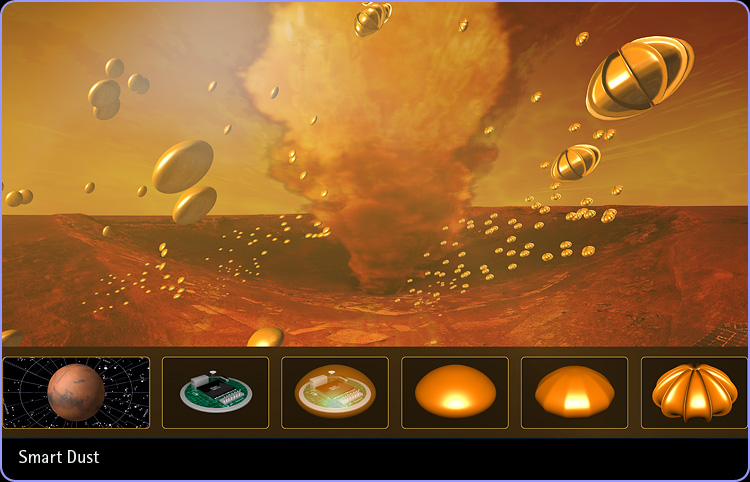Smart Dust is envisaged as swarms of miniature communication/sensor devices useful for remote monitoring in space exploration. With diameters and densities comparable to sand particles the behaviour of passive dust will be identical to the movement of airborne sand.
In particular we have investigated the possibility of using adaptive shape-changing of smart dust motes in which the drag coefficient is altered dynamically in response to favourable fluctuations in the wind velocity.
A smart dust mote has approximately the density and volume of a coarse grain of sand. It follows that the uncontrolled motion of smart dust is determined by the same processes of saltation, settling and surface creep that govern the movement of sand in desert regions.
Relatively simple shape changing algorithms, activated through an electro-active polymer sheath, will permit self-organised transport over large distances.
The image illustrates smooth smart dust motes sinking to the ground and roughened smart dust motes entrained in the wind, rising up against a backdrop of a Martian dust devil.
Data & Mars image : John Barker, Department of Electrical Engineering, Glasgow University & NASA.
© 2007 M. Robertson/Nanovisions
|
|

